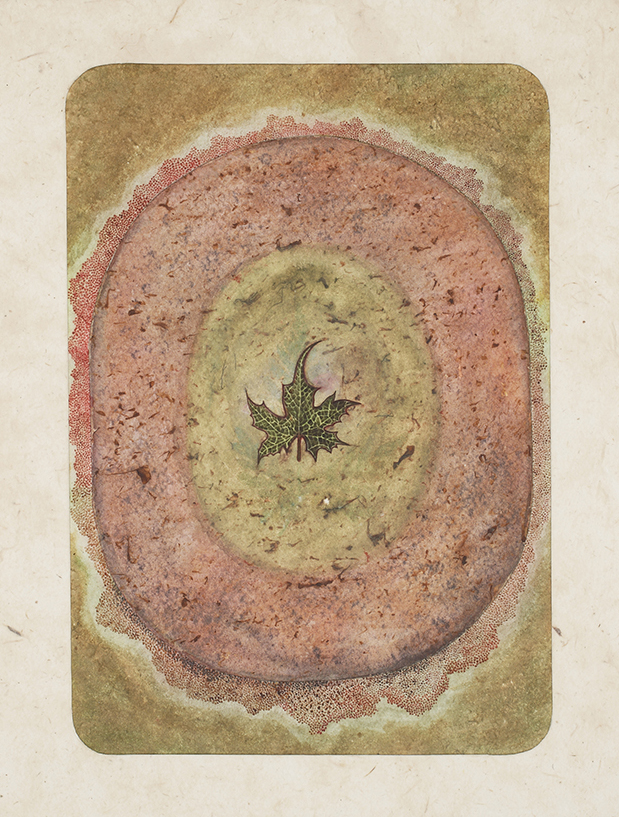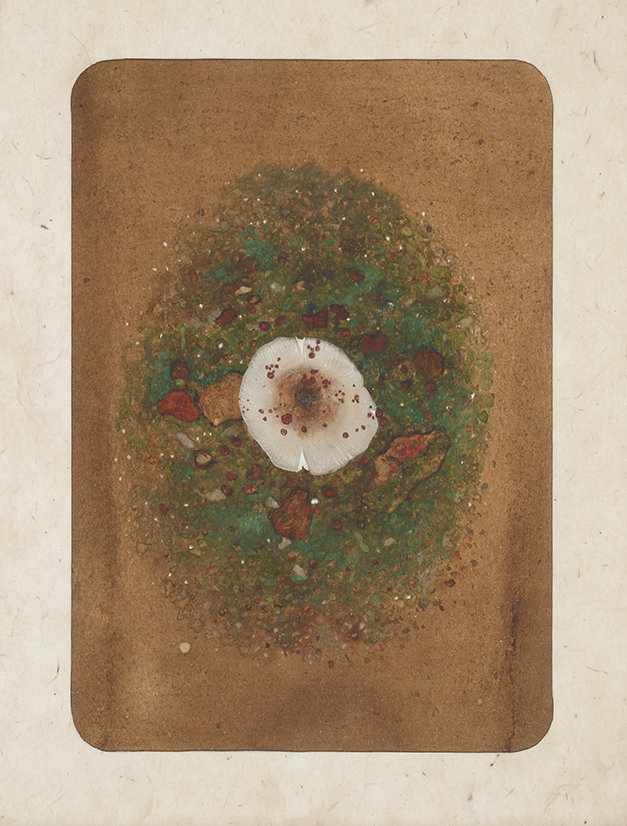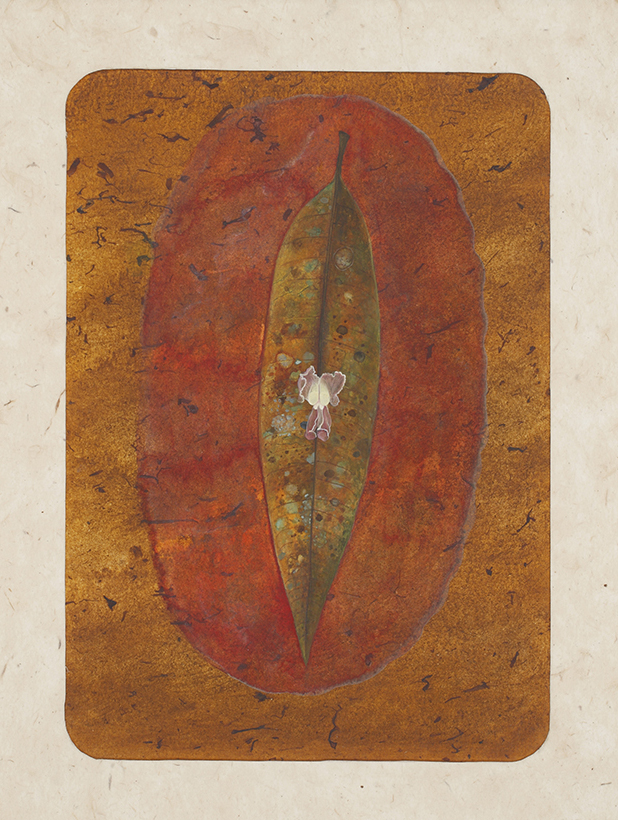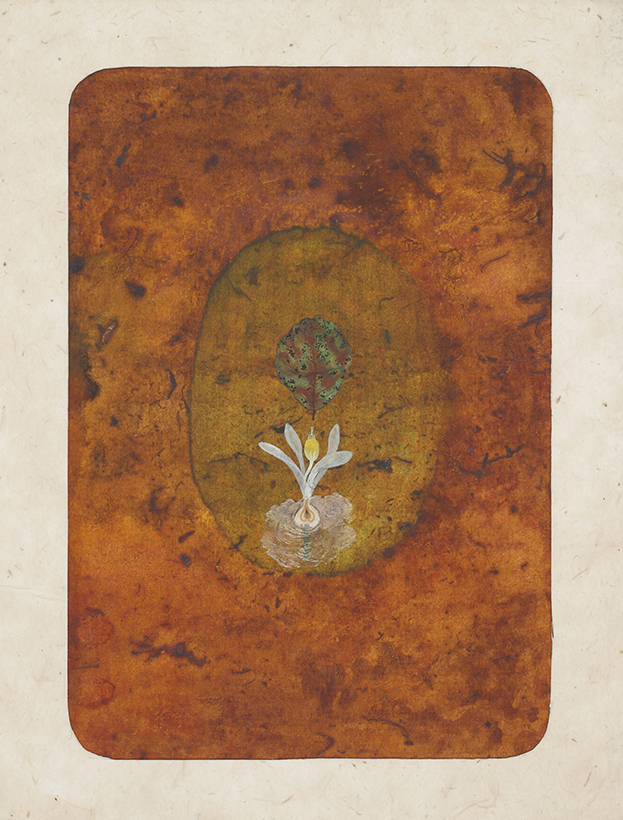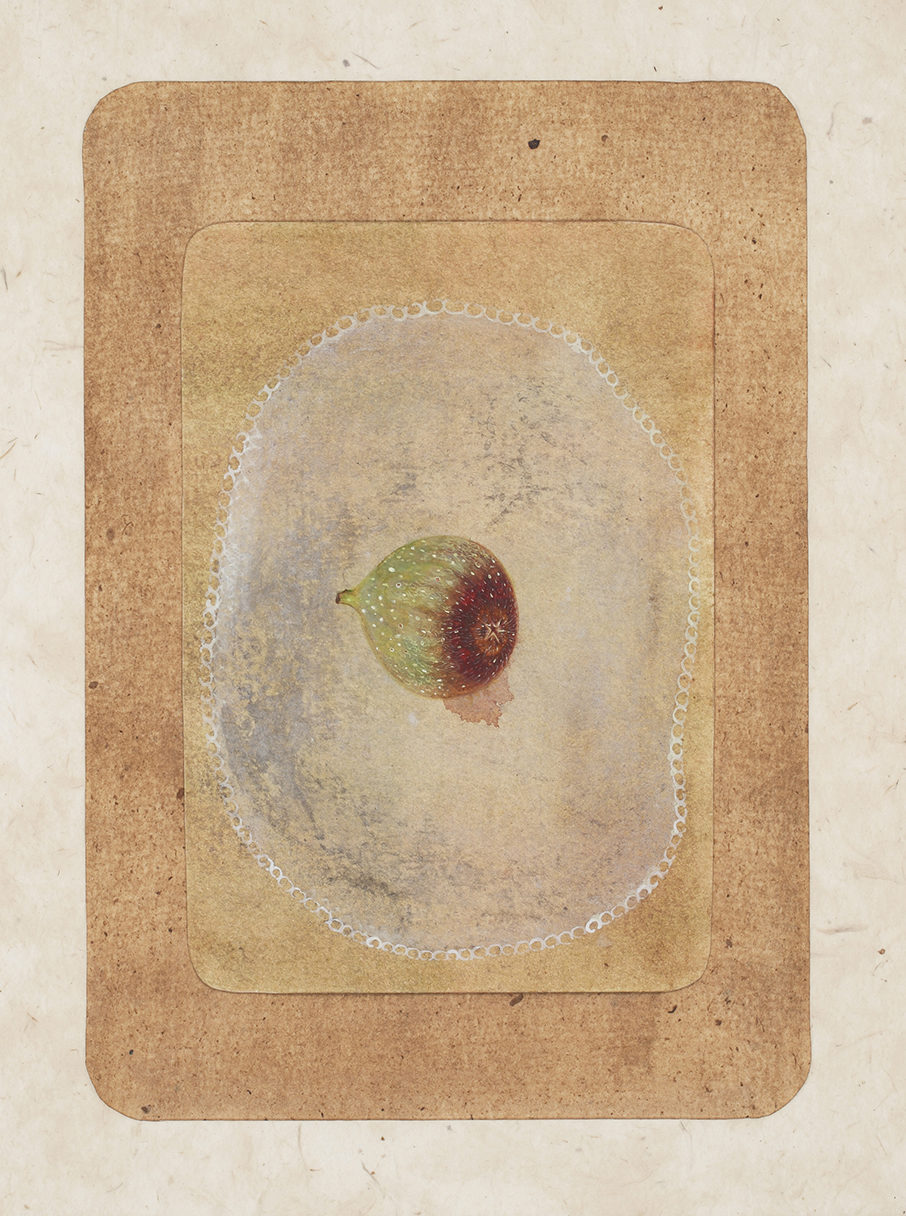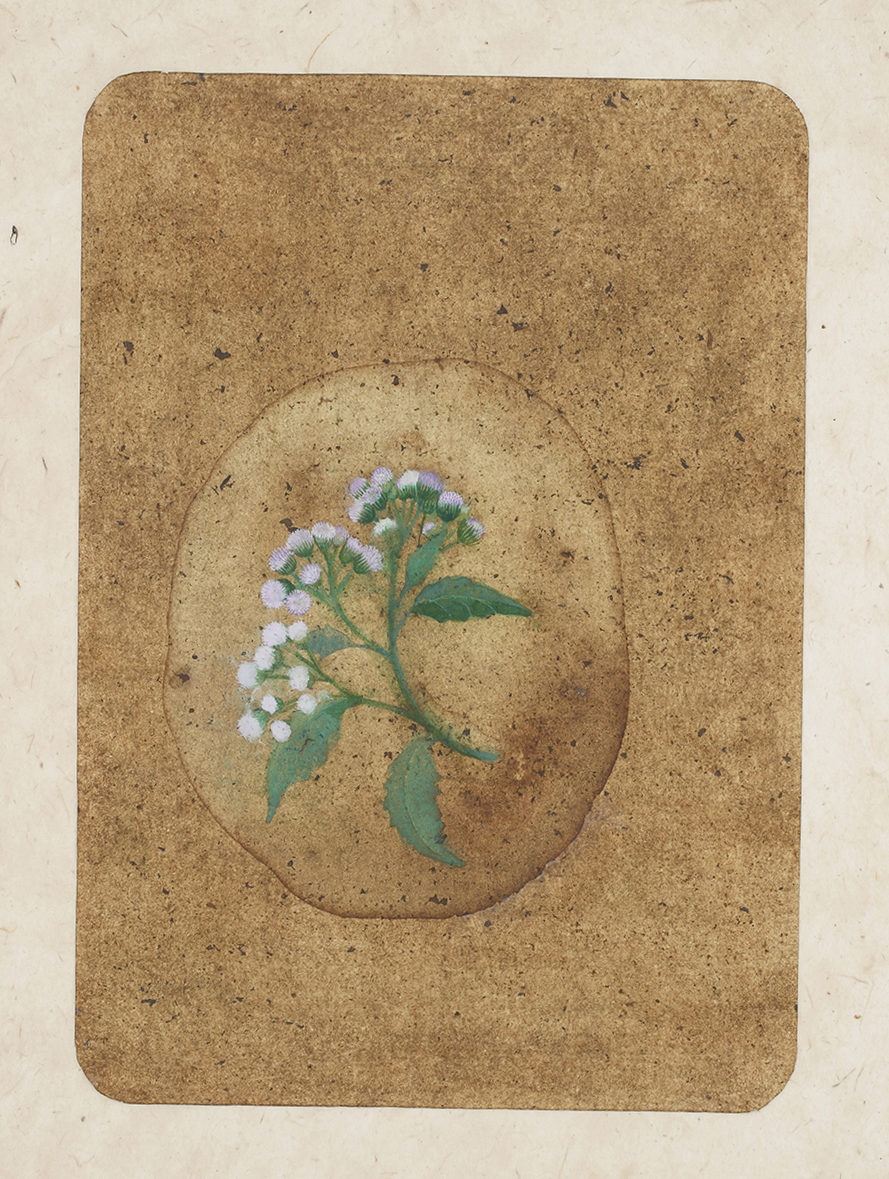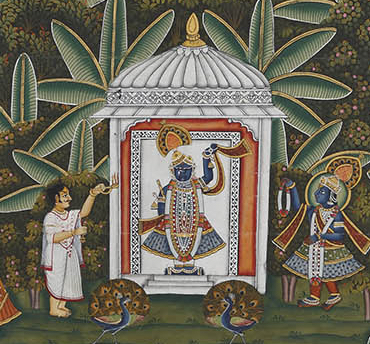All images © Sarmaya Arts Foundation
Text in italics, courtesy the artist’s work note
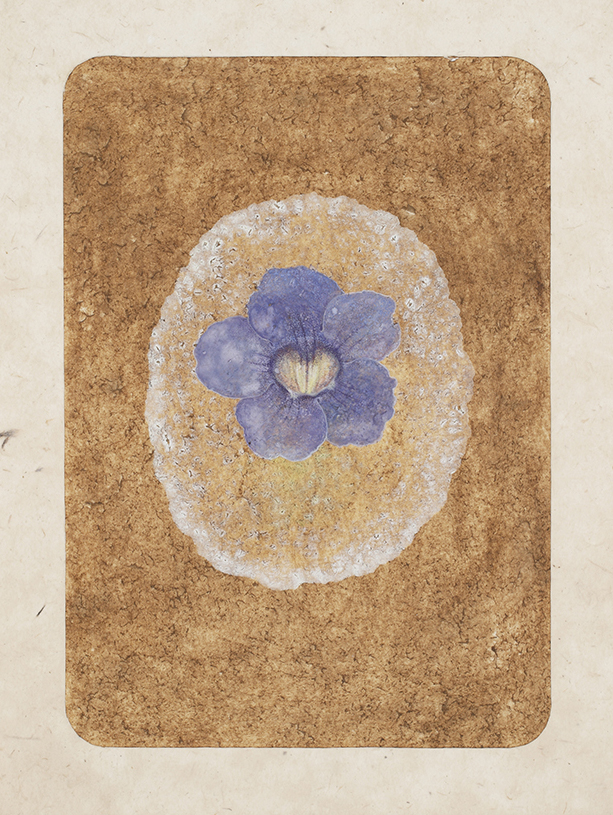
‘Bloom’, 2018
Hima Hariharan remembers the exact moment when she felt like an artist. She was six years old and had tagged along with her older brother (and ultimate hero) to an art competition. Wanting to be just like him, she too made a pencil drawing of the model—a plaster-of-paris bust of Shiva. The organisers were clearly impressed with this underage participant and presented her with a small trophy. “From that moment, I considered myself as a visual artist,” she smiles.
I am unable to describe what for me is a constant process. The works you see here are the results of my attempts to enter into my own self and out into my surroundings. Art is its reflection that makes the paths within navigable and travel worthy.
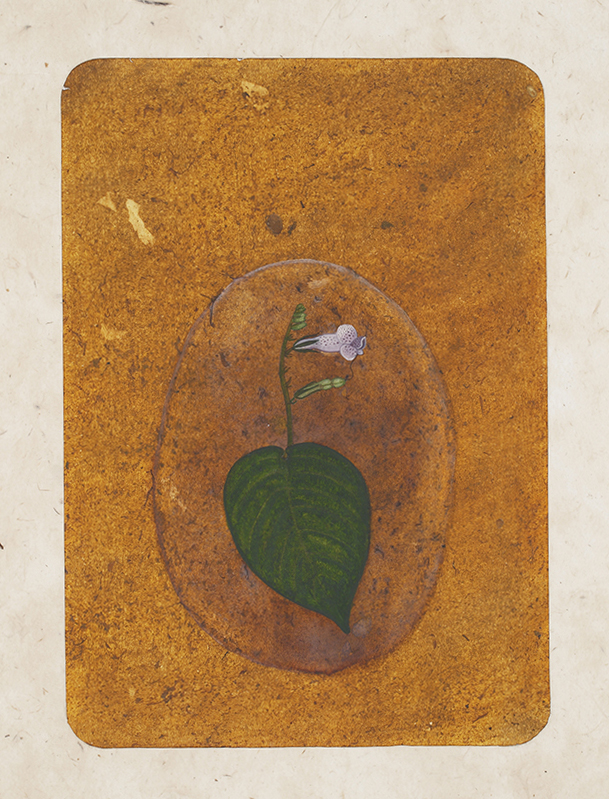
’And again the violet-again and again’, 2018
Hima comes from a home that’s connected deeply to art and nature. “My father taught me how to draw a bunch of mangoes hanging together and my mother showed me how to draw a long-necked swan and a five-petalled flower. I practiced these over and over. In early childhood, I was more copier than creator.” She grew up in a remote hillside in Idukki, Kerala where she received encouragement from an art teacher and her family. She moved away for a couple of years to Thiruvananthapuram and Thrissur to study animation and later get a degree from the Government College of Fine Art. “During that time, I was concentrating more on the self and its expression than nature.” But our artist soon missed the rolling greens of the countryside and moved back.
A flower, a smooth shiny little rounded pebble, an abandoned bird’s nest, a dead & dried up crab, fallen feathers... Things that do not lend themselves to easy consumption, that are not worthy of being assigned any monetary value…these find in me their viewer.
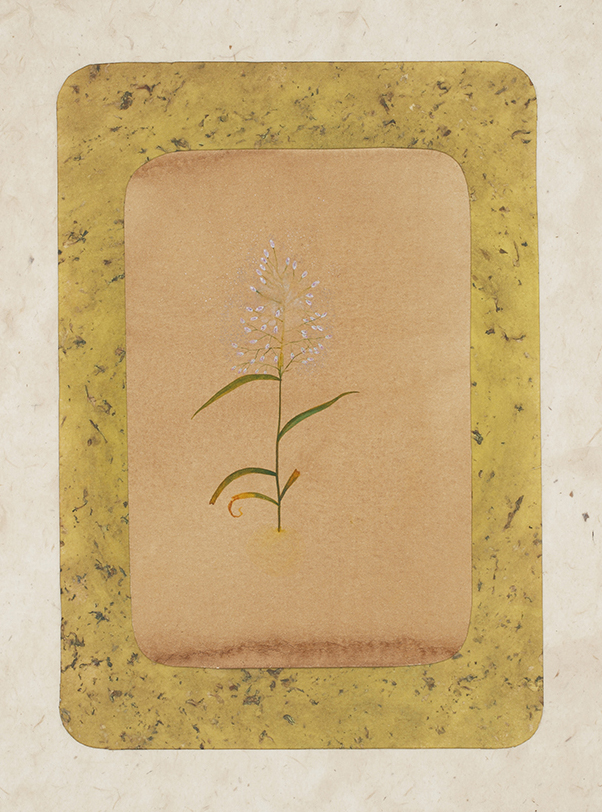
‘Close to Earth’, 2018
The Sarmaya collection of contemporary art holds ten paintings by Hima, created between 2017 and 2018, and they all reflect a fascination with the natural world, its textures and colours. This extends beyond the subjects, which themselves look like childhood treasures gathered from a forest floor and pressed lovingly between the pages of a fat book. It influences the process itself. “I start most of my works by staining the paper with the juice of flowers, leaves, fruits etc. Sometimes I apply tempera or tea wash on paper, and then stain it. These type of engagements or acts liberate my inner energy. The results are unpredictable but it helps me engage in the act [of making art] meditatively. How the stains appear on a textured paper can shift depending on climate change and my own mood swings. It’s a form of self-study, which helps me stay balanced and not become arrogant.”
In preparing the ground, planting seeds and watering them so that they may sprout; in spreading grains of rice upon the winnow and carefully picking out the spoilt ones and the tiny stones; in sweeping the house and casting out little caterpillars with their itchy fuzz—there are very many actions in daily life that let me experience the process of Art.
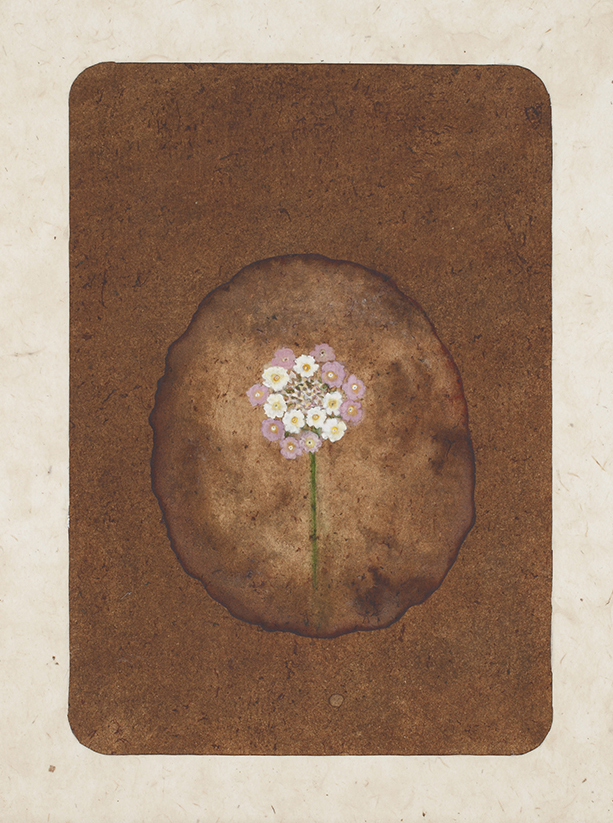
‘Resurrection’, 2017
Among her influences, Hima counts Chinese and Japanese naturalistic art and miniature paintings of the Mughal era, besides works of masters like Vincent Van Gogh and Gustav Klimt. But perhaps the most influential of her idols is Henri Rousseau, who is best known for his densely wooded canvases teeming with realistic-if-anthropomorphic creatures of the wild. The paintings in the Sarmaya collection are a result in part of what Hima titles her “Henri Rousseau mania”. She works with watercolours on paper, creating an opaque effect using the gouache technique. “As a child, I won a small poster of a Raja Ravi Varma painting. I tried to copy the oil painting effect with watercolour using gouache.” At times when I sit with my paper drawing a flower, a leaf or a delicate thorn I sit for hours lovingly, tenderly holding them close to myself building them up using layers upon layers of colour. As I enter into their subtlest zones, I fall apart in memory and imaginative reverie as I experience my environs as also my self within myself “The oval shapes which appear repeatedly in my works and onto which my found objects are placed, started accidentally. I found [the shape] could be a symbol of fertility and a repeating life cycle. I find more curves than squares in nature; the manmade world has more squares. I am not opposed to the manmade world but I have a little bit more empathy towards the other kind. I would love an unpolluted world blossoming with wild flowers.”

